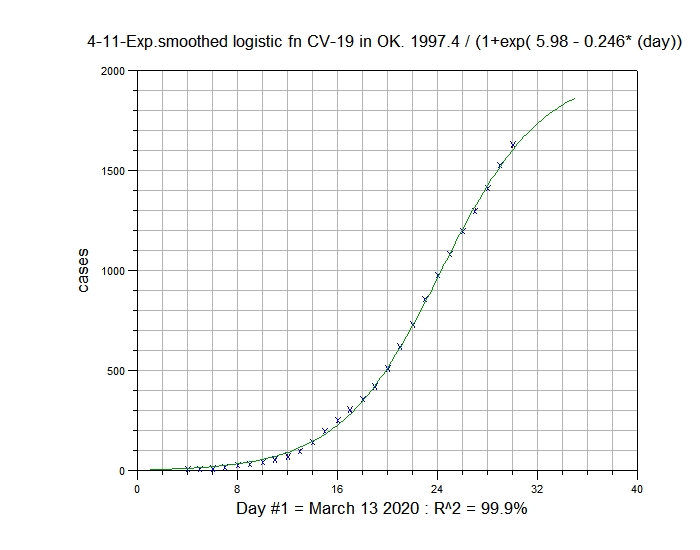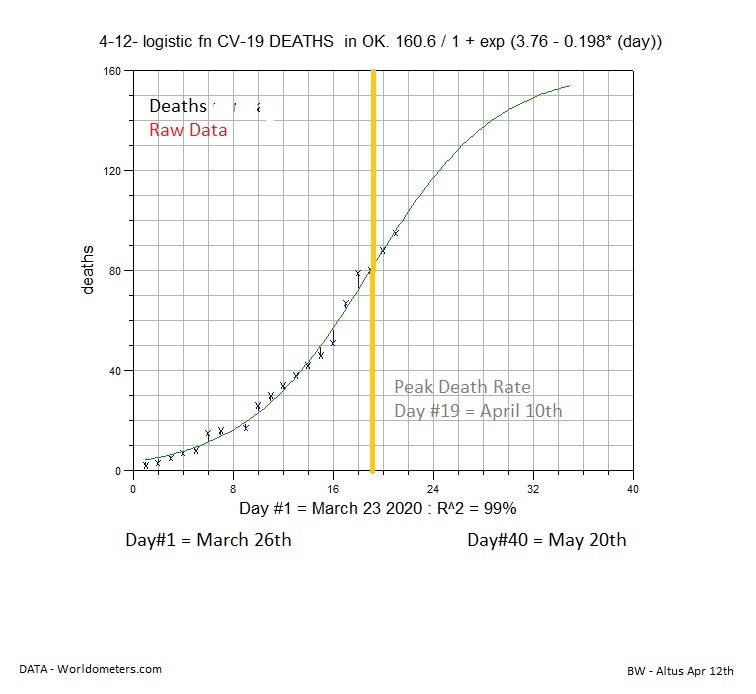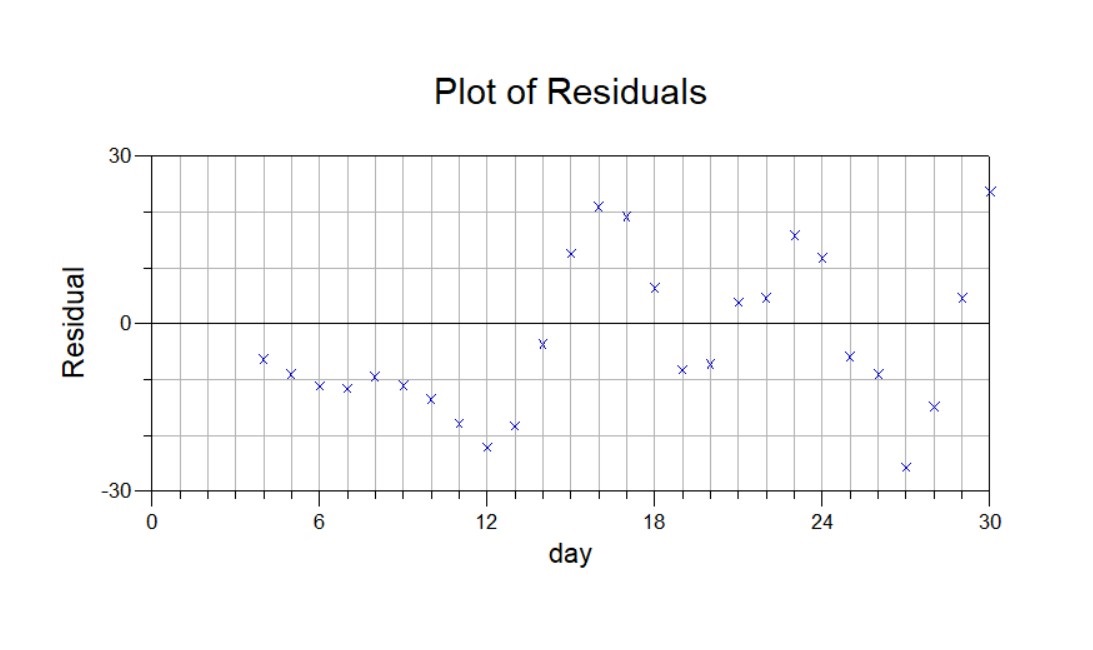I have tracked accumulated Case and Death data for Oklahoma from Worldometers.info.
Because these data are somewhat noisy, I used an exponential low pass on the input with time constant ~ 3 days and fit the series to a sigmoid function of this kind: cases = k / (1 + exp( A - b*days)) like this: 
I continue by presenting the logistic function (with best-fit parameters) to Wolfram Alpha to plot the differential : which is cases per day like this:

In the same way I fit deaths to a logistic like this:

and the resulting Alpha plot of death rate like this:

Here is a plot of residual errors in the case fitting function:
 I noticed a growing 7 day oscillation in reported cases. This may be a clerical artifact - or some intyernal dynamic.
I noticed a growing 7 day oscillation in reported cases. This may be a clerical artifact - or some intyernal dynamic.
DISCUSSION.
The logistic function is just two model steps away from the initial exponential function, and for later days the intermediate Straight Line fit. It provides high R^2 values for the largely pre-peak data. The logistic function has a short-coming to balance its simplicity: it uses the same exponential parameters before AND after the peak. This may become less realistic if the post-peak data decays on a LONGER time constant as it may well do. I hope that this approach may dissuade modelers starting from case/day data which is inevitably more noisy than the sigmoid case progression.
It is perfectly possible to require the non-linear regression application to refit the exponential rate after an established peak rate day, but I do not yet have sufficient data to make this practical.